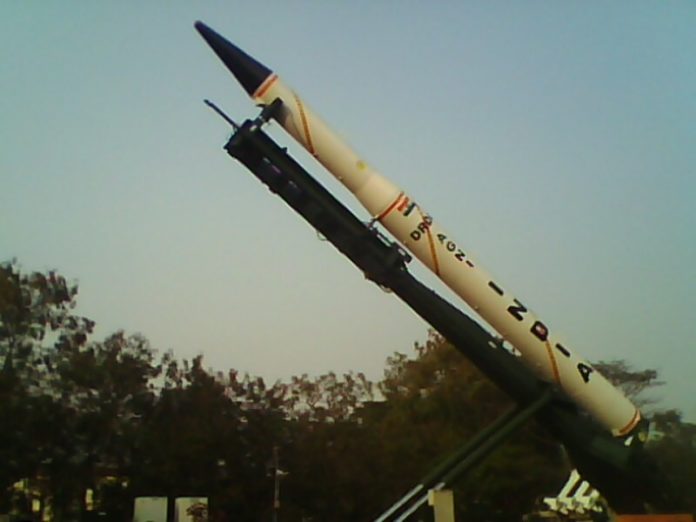India successfully test-fired its indigenously built nuclear capable Agni-I ballistic missile on Nov 22.
Agni-I was launched off the Odisha coast from the Interim Test Range (ITR). It is a surface-to-surface missile and is powered by solid propellants. Defence officials said it was launched from the Launch Pad-4 of the ITR at the Abdul Defense Island (Wheeler Island).
“The launch was undertaken as periodic training activity by Strategic Forces Command of Indian Army, to further consolidate operational readiness,” said Defence officials.
The previous trial of Agni-I was successfully accomplished in March 2014 from the same base. The missile weighs about 12-tonnes and has a range of 700 kms. It can carry a nuclear warhead of 1 tonne.
This 15-metre long missile carried a dummy warhead and the flight duration was of about 10 minutes. It’s first target was a remote location in the Bay of Bengal.
The missile is equipped with state of the art navigation systems which enable it to reach the target accurately.
The entire operation was conducted under strict supervision of the scientists from the Defence Research and Development Organisation (DRDO). The course of the missile was tracked by a battery of sophisticated radars, telemetry observation stations, electro-optic instruments and naval ships right from it’s launch to the target accuracy.
Agni-I has been developed by Advanced Systems Laboratory (ASL), in collaboration with the Defence Research Development Laboratory and Research Centre. It was integrated by the Bharat Dynamics Limited, Hyderabad.
Agni-I has already been instated into the Indian Army as it has proved it’s precision in terms of range, accuracy and lethality.

























